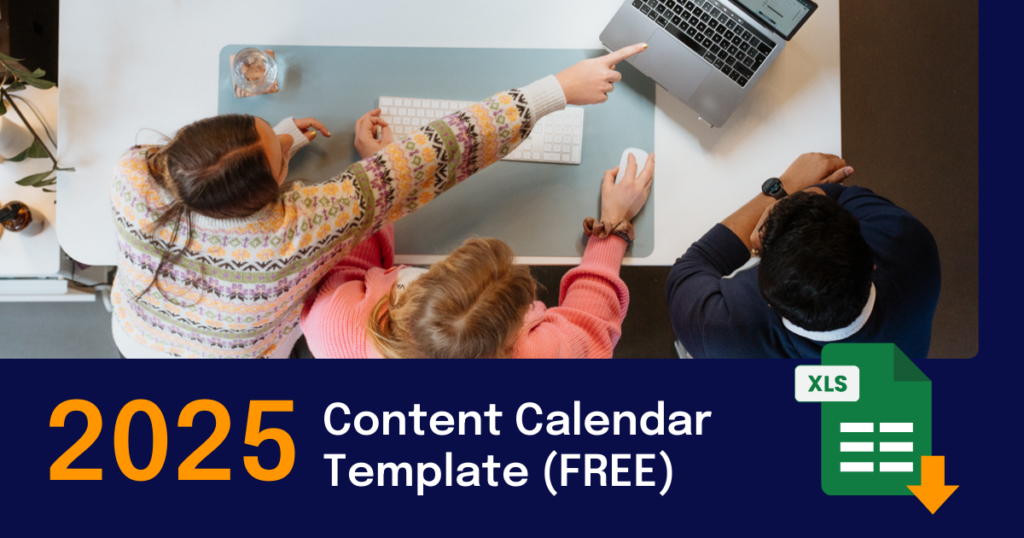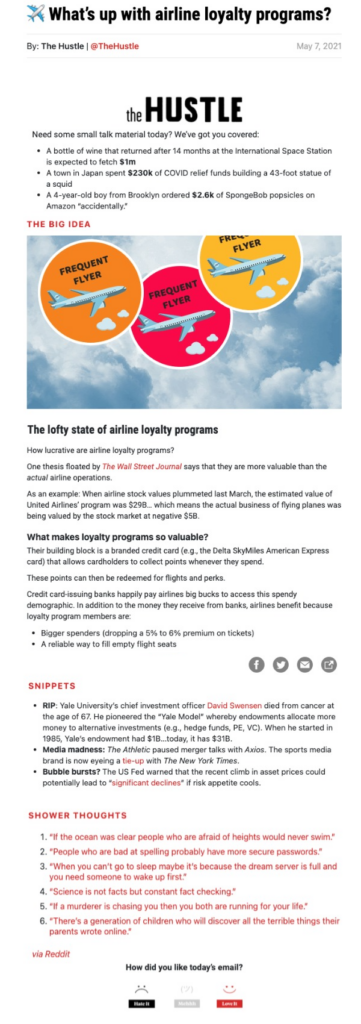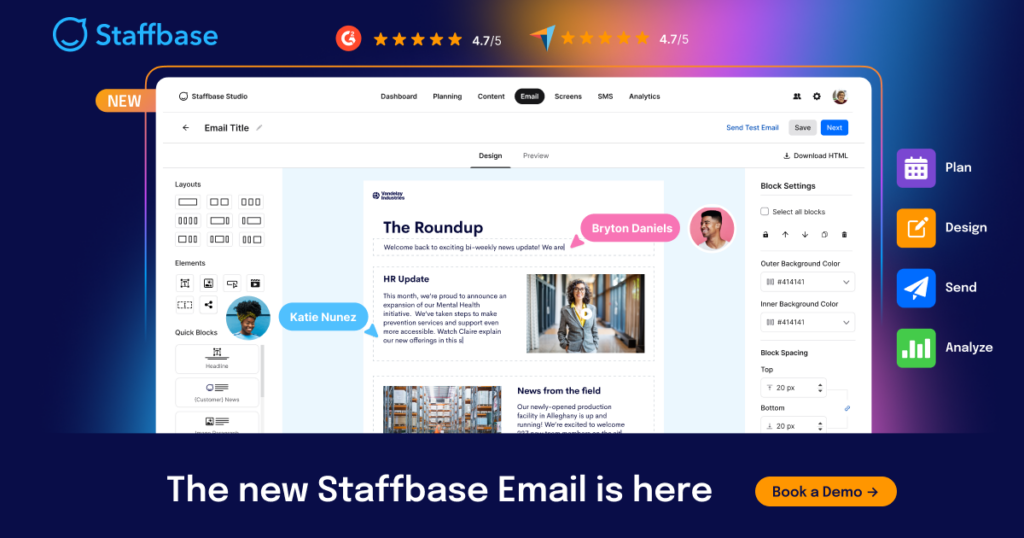Internal Newsletter Best Practices That Actually Work
In a world of nonstop pings, posts, and push notifications, it’s no wonder internal newsletters struggle to stand out. You’ve carefully crafted every sentence, sourced the perfect employee spotlight, and added just the right splash of company culture — only to be left wondering: Did anyone actually read it? An open rate might say they clicked, but it doesn’t tell you if they understood the message, felt motivated to act, or even made it past the first paragraph.
But the truth is, when done right, internal newsletters still have the power to connect team members, build culture, and keep employees informed in a way no other channel can. It’s all about relevance, readability, and rhythm — and a little help from the right tools.
In this post, we’ll walk you through the best practices for creating employee newsletters your team will actually want to read. From personalization and content strategy to mobile-friendly design and performance tracking, you’ll get practical tips that work — plus a look at how the New Staffbase Email makes the whole process easier, smarter, and more impactful.
What is an employee newsletter, and why does it matter?
An employee newsletter — also known as an internal newsletter — is a regular communication sent by a company to its employees. Typically delivered via email, these newsletters are designed to keep teams informed about important updates, celebrate milestones, highlight upcoming events, and share stories that reflect company culture.
More than just a roundup of announcements, an internal company newsletter is a key part of any effective internal communication strategy. Newsletters create a dedicated space for sharing consistent, organization-wide messaging that reaches employees no matter where they work — whether at a desk, on the frontline, or in the field.
When done well, employee newsletters do more than inform. They help foster a sense of community, build trust, and create stronger alignment between employees and leadership. They’re an opportunity to reinforce your values, recognize achievements, and open up space for two-way communication.
In a time when employees are asking for more transparency and connection, internal newsletters remain one of the most versatile and valuable tools in your communications toolkit.
Internal newsletter best practices: What works (and why)
These core principles will make your newsletter a channel your employees love — not ignore. Whether you’re starting from scratch or refining your current approach, these best practices will help you create internal company newsletters that are more engaging, effective, and aligned with your overall communication strategies.
Define clear goals and objectives
Before writing a single word, clarify what you want your newsletter to achieve. Is it to keep employees informed about company updates? Celebrate successes and boost morale? Reinforce your organization’s mission and values?
By setting clear objectives, you ensure your content has purpose — and that every issue contributes to your broader internal communication strategy. Defined goals help focus your message, measure impact, and avoid the all-too-common trap of sending newsletters just for the sake of it.
Know your audience and personalize content
One-size-fits-all doesn’t cut it anymore. Understanding who your employees are — their roles, departments, locations, and even communication preferences — enables you to tailor content that feels relevant and personal.
Use segmentation to deliver targeted updates to different teams or regions. Vary your tone and content style depending on your audience. Subject lines can even be customized to resonate more effectively.
Tools like Staffbase Email make it easy to apply dynamic content and personalize messages at scale — so every employee sees the information most relevant to them.
Keep the content relevant and engaging
Your newsletter is only as strong as its content. Focus on what matters most to your employees: major company news, team wins, upcoming events, employee spotlights, and behind-the-scenes stories that humanize your organization.
Vary the format to keep things fresh — mix in videos, Q&A sections, short surveys, or links to interactive content. And whenever possible, lean into storytelling. Stories are memorable, shareable, and a powerful way to reinforce your culture and values.
Use a visually appealing and mobile-friendly format
Your content may be great — but if it looks like a wall of text, it won’t be read. A clean, visually engaging design helps your newsletter feel inviting rather than overwhelming.
Use headers, bullets, and white space to make content scannable. Choose fonts that are easy to read and visuals that support your message. And make sure your design is mobile-optimized — many employees read newsletters on the go.
Accessibility matters, too. Use alt text for images, maintain color contrast for readability, and structure your layout with screen readers in mind.
Maintain a consistent sending schedule
A consistent cadence helps set expectations and build trust. Whether you send your newsletter weekly, biweekly, or monthly depends on your content volume and your audience’s preferences — but whatever you choose, stick to it.
Regular scheduling not only improves engagement but also makes it easier to plan ahead and avoid the scramble of last-minute content creation.

Write compelling subject lines and clear CTAs
Subject lines are your first — and sometimes only — chance to grab attention. Make them short, specific, and relevant. Ask a question, tease a story, or lead with a benefit that sparks curiosity.
Once your message is opened, a clear call to action (CTA) guides employees toward the next step — reading a blog, signing up for an event, or recognizing a colleague. Don’t bury the ask. Use buttons or bold links to make CTAs stand out.
With Staffbase Email, you can A/B test subject lines and track engagement metrics to see what resonates best.
Leverage employee contributions and employee feedback
The best newsletters don’t just talk at employees — they include them. Invite contributions from across the company: team wins, personal milestones, shoutouts, interviews, and behind-the-scenes stories. This not only diversifies your content but also builds a sense of ownership and inclusivity.
Feedback is just as important. Use pulse surveys or feedback forms to find out what’s working and what your employees want more (or less) of. Then act on it. Your newsletter should evolve with your workforce.
Measure and optimize performance
If you’re not tracking how your newsletter performs, you’re flying blind. Key metrics like open rates, click-through rates, time spent reading, and engagement levels offer valuable insights into what’s landing — and what’s not.
Analyze the data regularly to spot trends and fine-tune your approach. Are videos getting more clicks? Are certain subject lines driving higher open rates? Use that intel to continuously improve.
Tools like Staffbase Smart Impact provide communicators with detailed analytics that help you move beyond vanity metrics and measure real impact — so you can confidently report back to leadership and make data-driven decisions.
Common mistakes to avoid in internal newsletters
Even with the best intentions, it’s easy for internal newsletters to fall flat. Many of the issues that lead to low engagement are completely avoidable — and often come down to a few recurring missteps. Here are some of the most common mistakes internal communicators make, and how to avoid them:
Overloading with too much content
Trying to cram every update, announcement, and detail into one issue is a surefire way to overwhelm readers. Long walls of text and endless scrolling can cause employees to tune out before they’ve even started reading. Keep your content focused, scannable, and digestible. If it’s not necessary, cut it.
Sending irrelevant or generic content
If your newsletter feels like it was written for everyone, it may end up resonating with no one. Avoid sending generic, one-size-fits-all content. Instead, tailor your messaging to different audiences within your organization, and use personalization where possible to make each message feel more relevant.
Inconsistent sending schedule
Skipping a few weeks here and there, or sending your newsletter at random intervals, can make it feel unreliable or like an afterthought. Consistency builds trust and expectation. Choose a realistic cadence and stick to it.
Weak subject lines
If your subject line doesn’t spark interest, it won’t get opened — no matter how good the content inside may be. Vague or overly formal subject lines can easily get lost in a crowded inbox. Take time to craft subject lines that are clear, relevant, and engaging.
Ignoring mobile optimization
With more employees reading emails on their phones, mobile optimization is no longer optional. Newsletters that aren’t mobile-friendly can lead to poor readability and low engagement. Make sure your design is responsive, your fonts are legible, and your layout works on all devices.
Using corporate jargon or a formal tone
Internal communication should sound human. Overly corporate language or a stiff tone can create distance rather than connection. Use a voice that’s friendly, authentic, and reflective of your company culture.
Overlooking accessibility
Accessibility isn’t just a nice-to-have — it’s a necessity. If your content isn’t accessible to all employees, you risk excluding part of your workforce. Use proper contrast, alt text, and readable layouts to ensure everyone can engage with your content.
Neglecting feedback
If you never ask employees what they think of the newsletter — or ignore their input when they do share it — you miss out on valuable insights. Feedback loops help you continuously improve and ensure your newsletter stays aligned with employee needs and preferences.
Great internal newsletter examples
Note: Since internal company newsletters are typically not publicly available, the following examples come from external sources. While they target broader audiences, they demonstrate best practices in content, tone, layout, and design that internal communicators can adapt to elevate their own newsletters.
1. The Hustle
The Hustle is a daily email newsletter renowned for its concise and engaging content. While it’s an external newsletter, its design and content strategies offer valuable lessons for internal communications. The Hustle was acquired by HubSpot in 2021.

What they do well:
Concise Content: Delivers key stories in a brief yet informative manner, respecting the reader’s time.
Engaging Tone: Uses a conversational and relatable tone, making complex topics accessible.
Consistent Structure: Maintains a predictable format, helping readers know what to expect.
Takeaway for Internal Newsletters: Craft content that is succinct, engaging, and consistently structured to keep employees informed without overwhelming them.
2. You’ve Got Comms
You’ve Got Comms is a biweekly internal comms newsletter from Staffbase designed to keep communication professionals informed, inspired, and ready for action. It blends timely insights with a warm, conversational tone — making it feel more like a note from a savvy colleague than a corporate roundup.

What they do well:
Curated, relevant content: Offers practical insights, event updates, and comms best practices tailored specifically for internal communicators.
Consistent voice: Maintains a friendly, energizing tone that feels approachable — like your first good coffee of the day.
Clear layout: Each issue is thoughtfully structured, making it easy to scan and dive deeper into topics that matter most.
Takeaway for internal newsletters: Know your audience, speak their language, and deliver real value with every send. When your tone, content, and layout align, your newsletter becomes a welcome habit — not just another email.
3. James Clear’s 3-2-1 Newsletter
James Clear, author of Atomic Habits, sends the 3-2-1 Newsletter to millions of readers using a simple but powerful format: 3 short ideas from him, 2 quotes from others, and 1 question for reflection. It’s proof that great content doesn’t have to be long or flashy to make an impact.

What they do well:
Consistent structure: Every issue follows the same recognizable pattern, making it easy for readers to dive in and get value fast.
Brevity with impact: Each section is short, scannable, and carefully curated — ideal for busy readers.
Built-in interaction: The final question invites reflection, making the newsletter feel more like a conversation than a broadcast.
Takeaway for internal newsletters: You don’t need bells and whistles to engage employees. A clear structure, useful content, and a moment of interaction can go a long way — especially when time and attention are limited.
How Staffbase Email helps you create better newsletters

Creating a great employee newsletter takes time, creativity, and coordination — but it doesn’t have to be hard. Staffbase Email simplifies every step of the process, helping internal communicators design beautiful newsletters, deliver them to the right audiences, and track exactly what’s working. It’s built for the reality of modern employee communication: fast-moving, distributed, and often under pressure to prove impact.
Here’s how Staffbase Email helps you go from unread to unmissable:
Easy-to-use templates and drag-and-drop design
With a modern email designer that’s intuitive and collaborative, anyone can create visually appealing newsletters — no HTML required. Use customizable templates to save time and stay on-brand, and speed up content creation with AI-powered tools built right into the workflow.
Personalization that scales
Make every message feel relevant with advanced segmentation and targeting. From dynamic content blocks to multi-language capabilities, Staffbase Email ensures the right people get the right message — wherever they are in the world. You can even sync user groups to keep targeting automated and accurate.
Analytics that go beyond opens
Move past vanity metrics and understand what’s actually increasing employee engagement. The analytics dashboard lets you track performance by content type, user group, and more. You can embed quick polls or pulse surveys for real-time feedback and export reports to share impact across the business.
Integrated, cross-channel planning
Staffbase Email is part of the Staffbase Communications Cloud, which means your newsletters don’t live in a silo. With a shared editorial calendar, campaign planning tools, and synced publishing across intranet, app, and email, your messaging stays aligned — no matter the channel.
Enterprise-ready from day one
With unlimited user licenses, robust permission settings, and enterprise-grade security powered by Microsoft Azure, Staffbase Email is built to scale — without slowing you down.
If you’re looking to take your employee newsletters to the next level, Staffbase Email gives you the tools, insights, and flexibility to make every message count.
The bottom line on internal newsletters
Internal newsletters may not be the flashiest channel in your communications mix, but when done right, they’re one of the most effective. From aligning teams to reinforcing culture and keeping employees in the loop, a well-crafted newsletter can drive real connection across your organization.
By setting clear goals, tailoring content to your audience, using clean and mobile-friendly design, and consistently tracking performance, you can transform your newsletter from a forgotten email into a trusted source of information your employees will actually look forward to reading.
And with a platform like Staffbase Email, you don’t have to do it alone. Whether you’re looking to streamline creation, personalize at scale, or prove your impact with powerful analytics, Staffbase gives you everything you need to make your newsletters smarter, faster, and more engaging.
Ready to level up your internal newsletters?


Post Comment